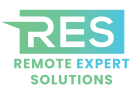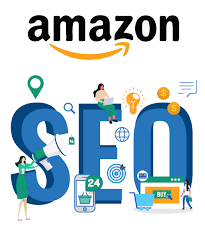Google’s brand‑new AI Mode has jolted the digital landscape, forcing marketers, entrepreneurs, and publishers to ask a hard question: Will this powerful feature siphon away clicks that once flowed steadily to our sites? The instinctive fear is understandable. AI Mode puts richly formatted, conversational answers right at the top of the results page—potentially letting users solve their queries without ever hitting a link. But panic isn’t a strategy. What matters is understanding how AI Mode actually works, how real‑world traffic is likely to shift, and—most critically—how you can position your website to thrive in this new search environment.
AI MODE businesses trends
In the next several minutes you’ll discover why AI Mode is trending across U.S. Google searches, what it means for commercial visibility, how to tailor an AI‑ready SEO strategy, and why well‑structured content can still draw a flood of qualified visitors. You will also find practical guidance geared toward service‑oriented businesses like Remote Expert Solutions (RES) that rely on search traffic to acquire customers, sell packages, and build brand authority.
What Exactly Is Google’s AI Mode?
Google’s AI Mode is the public rollout of its Search Generative Experience, fueled by the Gemini 2.0 language‑image multimodal model. Instead of ten blue links, users see a conversational answer box that pulls passages, statistics, product listings, images, and charts from multiple authoritative pages. They can ask follow‑up questions in natural language, refine the topic with a single tap, or jump to deeper resources.
How AI Mode Finds and Synthesizes Content
AI Mode disassembles every search query into dozens of “micro‑questions.” It scours the web for passages that directly answer those micro‑questions, then stitches the answers together into a coherent summary. This system relies on passage‑based ranking—meaning a single paragraph buried in your blog post can become the star of the answer box even if the broader page isn’t top‑ranked. That’s crucial for small businesses because you can earn visibility without outmuscling Fortune 500 budgets.
Why AI Mode is expanding in U.S. businesses
AI Mode shot to the top of Google Trends in the United States within twenty‑four hours of launch. Three catalysts drove that spike: mainstream media coverage of its release, viral social posts from users testing the feature, and the SEO community’s heated debate over the future of organic traffic.
Media Hype and Consumer Curiosity
National outlets highlighted how AI Mode lets you compare credit‑card interest rates, generate healthy recipes, or draft DIY repair steps in seconds. That coverage sparked curiosity among everyday users who typed “AI Mode,” “Google AI search,” and “AI search settings” into the bar to try it themselves.
Professional Buzz and Industry Concern
Marketers flocked to Google Trends to monitor “AI Mode SEO impact,” “zero‑click search,” and “how to rank in AI Mode.” This professional chatter amplified consumer interest, pushing the phrase to the top of trending‑search leaderboards.
Can AI Mode Replace Your Website’s Traffic?
It can erode casual click‑throughs on commoditized queries—yet it can also unlock new, highly qualified traffic for sites that adapt.
The Risk of Zero‑Click Searches
AI Mode’s concise summaries may satisfy users searching for simple definitions, dates, or basic “how‑to” instructions. Those queries are classic zero‑click territory. If your site depends solely on commoditized information, you could see impressions without clicks.
The Opportunity for Value‑Rich Content
Conversely, AI Mode cites its sources in prominent link cards beneath the summary. If your content answers nuanced, purchasing‑intent questions—think “best remote IT support USA for startups” or “hire a virtual assistant for Shopify store”—Google is incentivized to credit you. Users making commercial decisions often want the full article after reading an excerpt. In that scenario, AI Mode functions as a traffic accelerator, not a siphon.
How AI Mode Impacts SEO and Commercial Visibility
Traditional SEO emphasized backlink authority and keyword density. AI Mode elevates contextual relevance, semantic clarity, and expertise.
Contextual Relevance Over Keyword Stuffing
Because the AI model interprets meaning rather than matching strings, over‑optimized pages stuffed with duplicated keywords lose ground. Instead, providing natural, question‑and‑answer‑style explanations wins favor with the algorithm.
Enhanced Visibility for Commercial Content
Service keywords carrying purchase intent—such as “managed remote support plan pricing” or “AI SEO services for small business”—remain critical. AI Mode often embeds price ranges, comparison tables, and callouts for these high‑value terms. If your service pages and blog posts include transparent pricing models, case studies, and clear benefits, they are primed for inclusion.
Why AI Mode Is Not a Threat—If You Adapt
Every shift in search—from mobile indexing to voice search—sparked alarm before becoming routine. AI Mode is no different.
Passage‑Based Ranking Rewards Depth
Long‑form pages that drill into subtopics and feature strong internal linking give AI Mode plenty of candidate passages to feature. Each passage is a second chance to rank.
Proactive Optimization Builds Authority
Adding structured data like FAQ schema, employing descriptive H3 subheadings, and embedding compressed images with keyword‑rich alt text all help the model parse your material quickly. Fresh updates signal topical authority, further nudging AI Mode to trust and cite your domain.
How to Optimize Your Website for AI Mode
Start with a content audit. Identify evergreen pieces that already perform well for long‑tail queries. Expand them with richer context, real‑world examples, and updated statistics. Next, craft new articles that target conversational searches: “how to set up remote help desk support,” “AI chatbots for customer service cost,” and “virtual assistant services near me.”
Structuring Content for Maximum AI Visibility
Use a clear H2 followed by descriptive H3 subtopics that mirror likely follow‑up questions. For example, within a page about remote IT support, employ subheadings like “How Remote IT Support Lowers Overhead Costs” and “Response Time Benchmarks for 24/7 Help Desk USA.” Each subheading acts as a semantic signpost, guiding Google to pull a self‑contained passage.
Leveraging Multimedia and Schema
Embed screenshots of dashboards, short demo videos, or simple bar charts illustrating cost savings—accompanied by transcript or caption text. Apply FAQ schema to lists of common questions. Mark your pricing blocks with Product or Service schema so the model can lift price snippets directly.
Will AI Mode Work for Every Industry?
Industries grounded in data‑driven decisions—IT services, cybersecurity, SaaS, healthcare, finance—stand to benefit first because users demand authoritative details. Visual sectors such as home décor or fashion can still thrive by supplying style guides, lookbooks, and inspirational photography with descriptive metadata.
Local and Niche Advantages
Small, geographically focused service providers can outrank national players by offering hyper‑specific answers. A page titled “remote network monitoring for dental offices in Dallas” speaks to a micro‑audience that AI Mode is eager to satisfy.
The Business Case for AI Mode Adoption
Companies like Remote Expert Solutions compete on expertise, responsiveness, and trust. AI Mode amplifies those qualities when your content is clear and thorough.
Revenue Impact
If AI citations drive fewer but more qualified clicks—users who already trust your authority—conversion‑rate improvements can offset smaller raw traffic numbers. For commercial keywords, AI Mode often shows comparison widgets where your brand can appear alongside competitors, accelerating decision‑stage leads.
Competitive Differentiation
Early adoption signals innovation. Publishing thought‑leadership pieces like “SEO for AI search engines” or “AI‑powered remote support” positions RES as forward‑thinking and customer‑centric, attracting clients eager for modern solutions.
Final Thoughts
Google’s AI Mode isn’t here to steal your digital audience. It is here to reward the best answers, the clearest explanations, and the most authentic expertise. Websites that embrace structured content, tackle specific user pain points, and update pages with authoritative insights will not only retain visibility—they will dominate it.
The evolution of search has always favored those who adapt first. Treat AI Mode as an ally, feed it with high‑quality passages, and you’ll discover that traffic doesn’t vanish; it redistributes to sites prepared to meet users where they are—inside a smarter, conversational search box.
Frequently Asked Questions
1. What is AI Mode in Google Search?
AI Mode is Google’s AI‑powered search experience that delivers conversational, multi‑source answers directly on the results page, powered by Gemini 2.0.
2. Is AI Mode replacing traditional search results entirely?
No. Standard web listings still appear, but AI Mode occupies premium real estate, especially for informational and commercial queries.
3. Why did AI Mode trend in U.S. searches within twenty‑four hours?
National media coverage, viral social media demos, and industry discussion caused a surge of curiosity about how the feature works and its impact on website traffic.
4. Does AI Mode reduce all website clicks?
It can lower clicks on simple factual queries, yet it can boost qualified clicks for in‑depth, commercially focused content that AI Mode cites as authoritative.
5. How do I ensure my page appears in AI Mode answers?
Write comprehensive, semantically rich content, use question‑style H2 and H3 headings, apply FAQ schema, and keep information up to date.
6. Which keywords perform best for AI Mode optimization?
Long‑tail, intent‑driven phrases like “best remote IT support USA,” “AI SEO tools for small business,” and “virtual assistant for ecommerce store” align with conversational queries.
7. Does passage‑based ranking change my content strategy?
Yes. Each paragraph should stand alone as a clear, complete answer so Google can extract it. Dense, unfocused text blocks are less likely to be featured.
8. Are small businesses at a disadvantage in AI Mode results?
No. Passage‑level ranking allows niche experts to outrank larger competitors by providing specific, high‑quality answers to specialized questions.
9. Should eCommerce sites worry about AI Mode?
They should adapt, not worry. AI Mode can display product comparisons and price snippets that drive purchase‑ready traffic when structured data is implemented.
Contact Us
Admin@remotexpertsolutions.com






